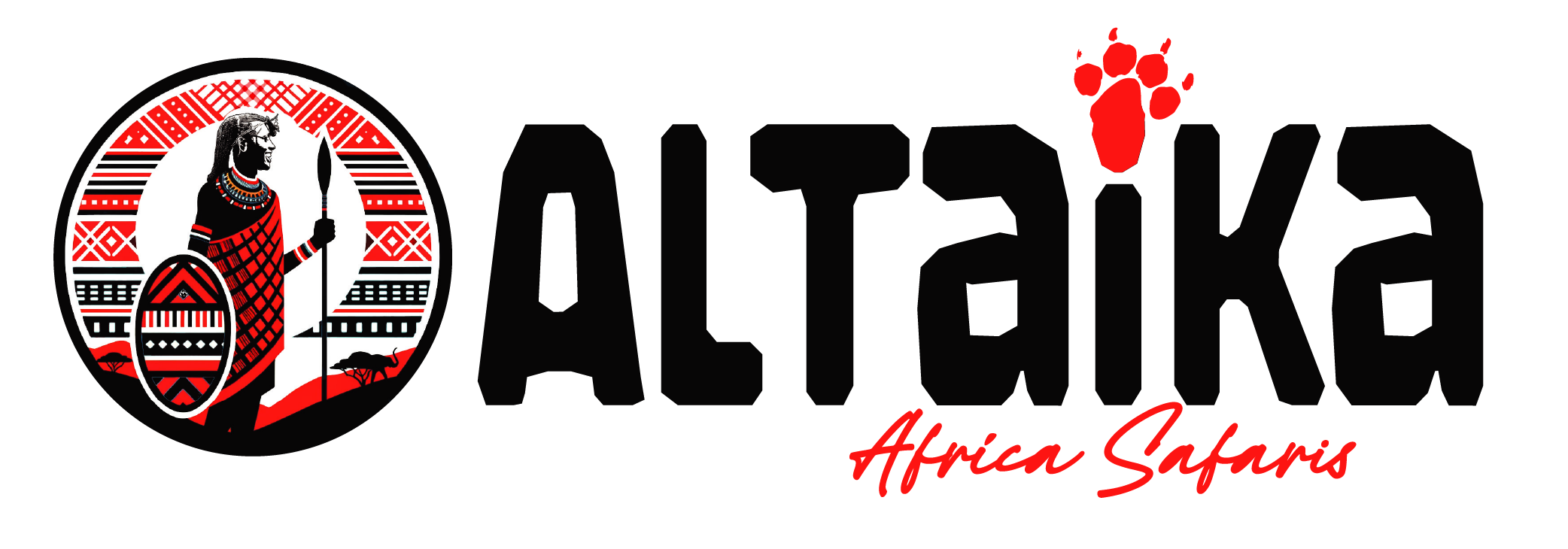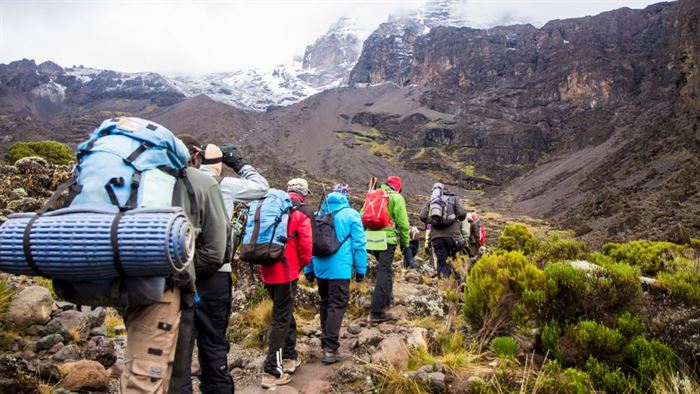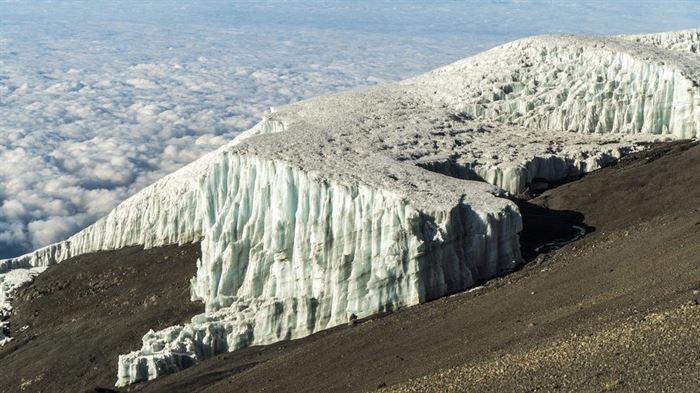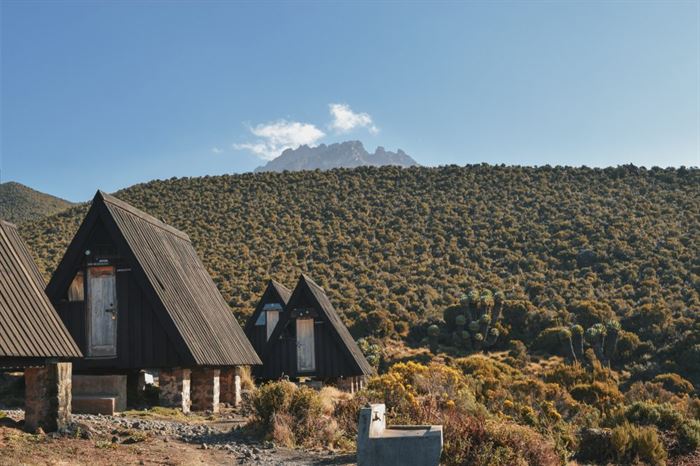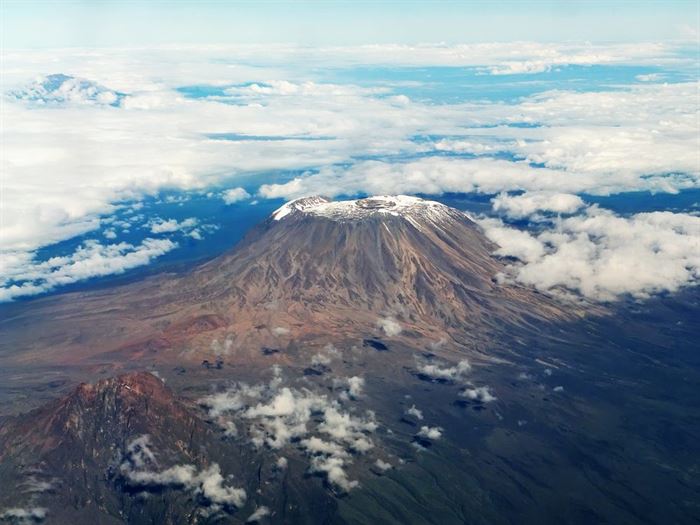Overview
The Machame route, also known as the Whiskey Route, is a classic Kilimanjaro trail and one of the most popular paths to climb the mountain. Altaika Africa Safaris organizes hundreds of expeditions annually along this stunning route that begins in a beautiful tropical forest. The Machame route is available in 6- and 7-day variations, with the latter offering a significantly better acclimatization profile and a higher summit success rate. Machame 7 is an excellent choice for adventurers, offering breathtaking views and being suitable even for beginners. You’ll experience hiking through all five climatic zones of Kilimanjaro, scale the iconic Barranco Wall, and encounter the alien-looking Dendrosenecio kilimanjari – unique plants found nowhere else on Earth.
Itinerary
Arrive at Kilimanjaro International Airport (JRO), where you will meet an Altaika Africa Safaris representative, who will assist with your transfer to the hotel included in your package. The hotel offers all the essentials for a comfortable stay: cozy rooms, hot water, friendly staff, a swimming pool, and Internet access. In the evening, you will attend a briefing with our managers to ensure you are fully prepared for the climb.
Private tour packages include shared airport transfers for your group. Additional charges apply for individual transfers outside the group schedule. To avoid extra costs, it is recommended to coordinate your group’s arrival and departure times.
Mti Mkubwa Camp
A guide and a mountain support crew will arrive at your hotel in the morning in order to meet you and hold a quick briefing. Then you will travel by vehicle to Kilimanjaro National Park’s entrance: Machame Gate. After the quick formality of acquiring climbing permits and registering with the search and rescue service, the group will start trekking up to Machame Camp. Day 1 on the Machame Route includes passage through a rainforest where tropical showers are highly probable, so we recommend you take not only spare clothes but also a raincoat.
PLEASE NOTE:This will be your first day at this altitude, so it is strongly recommended you heed the following instructions from this point on:
Drink over 4 liters of bottled water daily (little by little, frequently);
To help alleviate symptoms of altitude sickness, consider using a preventive measure like a high-altitude aid medicine. Many mountain climbers take such pills in the morning, before they begin their ascent, to reduce discomfort associated with altitude sickness. Our managers will provide more specific details together with your travel itinerary. We recommend consulting your doctor prior to the trip to discuss any potential allergies or health concerns.
At night you may experience discomfort associated with acclimatization to the high altitude: because of a reduction in your breathing pattern at night, your body gets less oxygen than during the day. Taking altitude into account, you may therefore start feeling sick and experience a headache. Pay attention to your own body and tell your guide if you start feeling any symptoms of altitude sickness.
Shira 2
After breakfast, you will start trekking up to the second high-altitude camp, Shira Camp. On this day you will emerge from the rainforest and for the first time be able to see stunning views of the Shira Plateau laid out in front of you. Technically speaking, trekking is not very difficult, but you may feel the change in altitude, so pay attention to your body and remember that choosing the proper pace is extremely important for good trekking. When you reach the camp, you will have lunch and some rest, after which the group will go on an acclimatization hike towards Lava Tower Camp with a 400 m /1,312 f gain in altitude. Back down at Shira Camp, you will be served a hot dinner.
 Change in Elevation:
Change in Elevation: Hiking distance:
Hiking distance: Hiking time:
Hiking time:
Barranco Camp
After breakfast, your group will depart Shira Camp and head towards Lava Tower. The rise-and-fall nature of this trek may present some difficulties. However, reaching the 4,600 m /15,088 f altitude at the Lava Tower is crucial for proper acclimatization, so we encourage our groups to eat lunch at the top of the Lava Tower. This allows you some additional time at a high altitude before descending approximately 700 m /2,297 f to Barranco Camp, which is the next overnight stop on this route.
Here you can see the famous Barranco Wall, impressive in both its massive size and steepness! The next day you will be hiking it, but don’t worry: it features a very simple hiking trail and is not intimidating.
On this day it is best to make an early start to avoid crowding on the way up Barranco Wall. Despite the Wall’s seemingly daunting height and steepness the actual climb is rather simple and takes only an hour or so to complete. The top of the wall provides a great photo opportunity with Kibo Peak as the backdrop.
The next part of the day is rife with ups and downs and your guides will choose the best pace for individual trekkers. A lunch break at Karanga Camp will be followed by an acclimatization hike in the direction of Barafu Camp with its highest point of the hike being 3,995 m /13,104 f. The group then hikes back to Karanga Camp for the night.
After breakfast, you will begin your way to Barafu Summit Camp. Our team will set up a camp for you ahead of time, including tents and sleeping bags, so you can relax upon arrival. After regaining strength, you have to complete an acclimatization climb towards the intermediate Kosovo Summit Camp with its highest point being 4,870 m /15,974 f and then back to Barafu Camp, where you will be served a hot dinner. It is better to spend the remainder of the day resting and sleeping before the night summit.
Summiting starts around midnight. You will begin at an altitude of 4,870 m /15,974 f and climb to Uhuru Peak at 5,895m/19340f. While the trek itself is fairly simple, the high altitude means that even regular physical exercise will feel strenuous. Therefore, climbers will be put in groups of two and assigned a personal guide who will monitor their condition throughout the climb for the entire summit trek. Upon summiting, you will have an opportunity to walk to the nearest glacier. You will enjoy a 2-hour rest at Barafu Camp and then continue descending to Millennium Camp.
PLEASE NOTE:The descent is deceptively easy and some areas have poor footing. 90% of accidents occur during the descent. Mind your feet if you want to avoid falling and damaged toenails!
You are sure to enjoy a good night’s sleep at the lower altitude, and the sense of satisfaction from reaching the top. Breakfast will be followed by another descent, down to 1,640 m /5,379 f and arrival at Mweka Gate. After a short celebration with the whole of the climbing crew, you will receive your climb certificates and be transported back to your hotel.
You are sure to enjoy a good night’s sleep at the lower altitude, and the sense of satisfaction from reaching the top. Breakfast will be followed by another descent, down to 1,640 m /5,379 f and arrival at Mweka Gate. After a short celebration with the whole of the climbing crew, you will receive your climb certificates and be transported back to your hotel.
Includes/Excludes
Cost Includes
- All transfers
- Hotel before and after the hike
- Camping equipment
- Meals on the hike
- Professional guides and porters
- Oxygen tanks
- GPS Trackers
- Medical check-ups, fully-loaded medical kits, and in-company doctor
- Fully-loaded medical kits
- All park fees and taxes
- Dedicated support team
- Safe room and storage room
- Leave No Trace adventure
- Impactful change for the local communities
Cost Excludes
- Personal hiking/trekking gear
- Tips for guides, porters, and cooks
- Travel insurance
- Personal expenses
- Flights
Frequently asked Questions
Mount Kilimanjaro is the highest freestanding mountain in the world and the highest mountain in Africa. Its highest point is Uhuru Peak on the Kibo crater at 5895m above sea level.
None, but previous hiking or climbing experience will help. You need to be fit and healthy and have a good pair of worn-in hiking boots. The fitter you are the more you are likely to enjoy it.
You don’t need mountain climbing gear. You can rent most of the clothing and equipment you need in Tanzania, but bringing your own clothes, well worn-in boots and a good sleeping bag is best. You will need a small day pack with enough space for wind and rain clothes, some first aid, 3 litres of water and snacks.
Warm clothes (fleece, wind and waterproof layers), good polarised sunglasses, sunscreen and a head lamp should be included in your packing list. You might prefer to use walking sticks and gaiters, but these can be rented from your trekking operator. Even thermal underwear and down jackets can be rented from us. If think you do not have the correct clothing and gear, please contact us for advice.
Getting to Tanzania and hiking up Kili is not cheap. But the once in a lifetime experience is worth every penny. Costs (usually quoted in USD) will depend on the tour operator and what you need. Luxuries such as portable toilets and glassware will cost more. Land costs should include transport to and from Kili, full board, porters, guides, cooks, national park fees and permits. Do not choose the cheapest operator, choose an operator who discloses all costs and who offers value for money.
You will eat normal food: potatoes, rice, pasta, vegetables, eggs, sandwiches, cheese and fruit. When you book a trek, let your tour operator know about food allergies or medical conditions that require special diets. Non-vegetarians will be served sausages, chicken and meat. Tea, coffee and hot chocolate will be available as well.
From the mountain. Porters collect water from the streams and it is boiled before use. This water will be used to fill your water canisters. You don’t need to use purification tablets, but it is recommended. Some operators offer bottled water – at extra cost as porters have to carry this up the mountain.
No. There are no hotels on the mountain and no cable cars to the top. You will most probably sleep in tents, or in basic huts if you take the Marangu route. Tents and sleeping mats are carried and set up by the porters. You do need to bring a very warm sleeping bag or rent it from Us.
You might experience symptoms of altitude sickness – headaches, nausea, loss of appetite and dizziness. Apart from obvious injuries that can occur when walking in uneven terrain and in very cold conditions, you will not be in danger of mugging, attack by animals or malarial mosquitoes.
Yes, it is expected and much appreciated. The amount depends on the amount of days, but can range from $150 and $300 per hiker. Tips are pooled and shared amongst the crew. Bring US dollar bills.
A good level of fitness and a positive, determined attitude will ensure success. Also, you will need good support and the right gear.
You have a 50% chance – to make it or not. Of the 40 000 visitors Kili attracts each year, between 50 and 75% turn back before reaching the summit according a report by the International Mountaineering and Climbing Federation. The main reason for this is cold, dehydration and altitude sickness. You will increase your chances by choosing the right route, allow an extra day for acclimatising to the height, good protection against cold and good guides to help you acclimatise and pace yourself.
